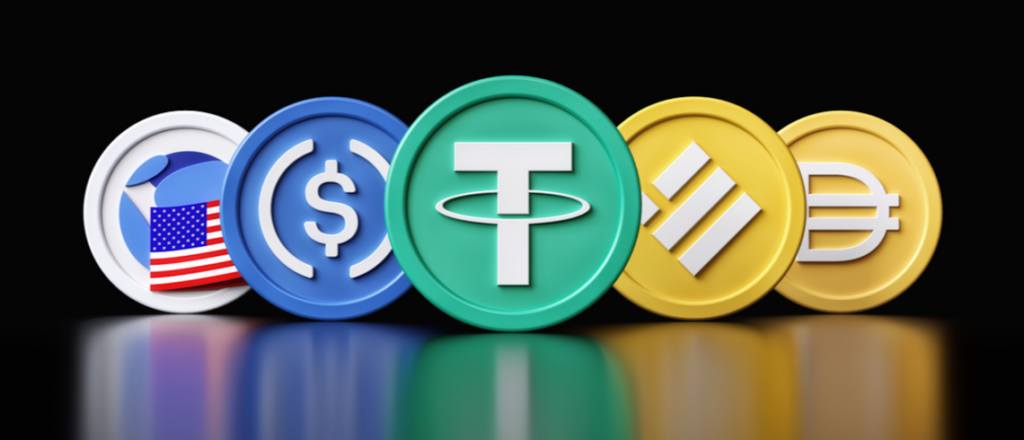A type of cryptocurrency called a stablecoin is intended to keep its value stable in relation to a single item or group of related assets. They are referred to as “stable” cryptocurrencies since they are designed to prevent the wild price fluctuations that are typical of other cryptocurrencies like Bitcoin or Shiba Inu.
Stablecoins come in a variety of forms, each with unique advantages and disadvantages. A handful of the most typical varieties are listed below:
Stablecoins that are backed by a reserve of fiat money, such as the US dollar, are referred to as fiat-collateralized stablecoins. An illustration of a stablecoin with fiat collateral is Tether (USDT). The concept is that an equivalent amount of US dollars are held in reserve for each USDT token that is created. This makes it more likely that the stablecoin’s value will remain largely stable. A stablecoin that is backed by the US dollar is USDC. Because it is a fiat-collateralized stablecoin, there are corresponding amounts of US dollars held in reserve for each USDC token that is released. This makes it easier to maintain USDC’s relative stability and peg to the US dollar’s value.
The cryptocurrency business Circle developed USDC, which is distributed on the Ethereum network. Due to the fact that it combines the speed and efficiency of blockchain technology with the stability of the US dollar, it is extensively utilized as a form of payment and for trading on cryptocurrency exchanges. Additionally an open-source initiative, USDC is overseen by a group of organizations, which promotes decentralization and transparency.
Stablecoins that are backed by a reserve of other cryptocurrencies, such as Ethereum or Bitcoin, are known as “crypto-collateralized stablecoins.” A stablecoin with crypto-collateral is DAI, for instance. The plan is to have an equivalent amount of Ethereum in reserve for each DAI token that is produced. This makes it more likely that the stablecoin’s value will remain largely stable.
Algorithmic Stablecoins: These stablecoins rely on sophisticated algorithms to guarantee their stability rather than being backed by any tangible assets. The algorithms regulate the stablecoin’s supply in response to variations in demand. This makes it more likely that the stablecoin’s value will remain largely stable.
Stablecoins come in various varieties, each with unique benefits and drawbacks. For instance, stablecoins with fiat collateral give the familiarity and stability of conventional currencies, but they also need a reliable third party to maintain the fiat reserve. Decentralization and trustlessness are advantages of crypto-collateralized stablecoins, but they are also more complicated and dependent on the stability of the underlying cryptocurrencies. Although algorithmic stablecoins combine the advantages of decentralization and stability, they are also the least understood and may carry higher risks.
In conclusion, stablecoins are a significant advancement in the realm of cryptocurrencies since they provide a means of taking advantage of those benefits without experiencing the volatility that is frequently linked to them. Before making an investment, you should do your own research and understand the risks involved, regardless of whether you select a fiat-collateralized, crypto-collateralized, or algorithmic stablecoin.






